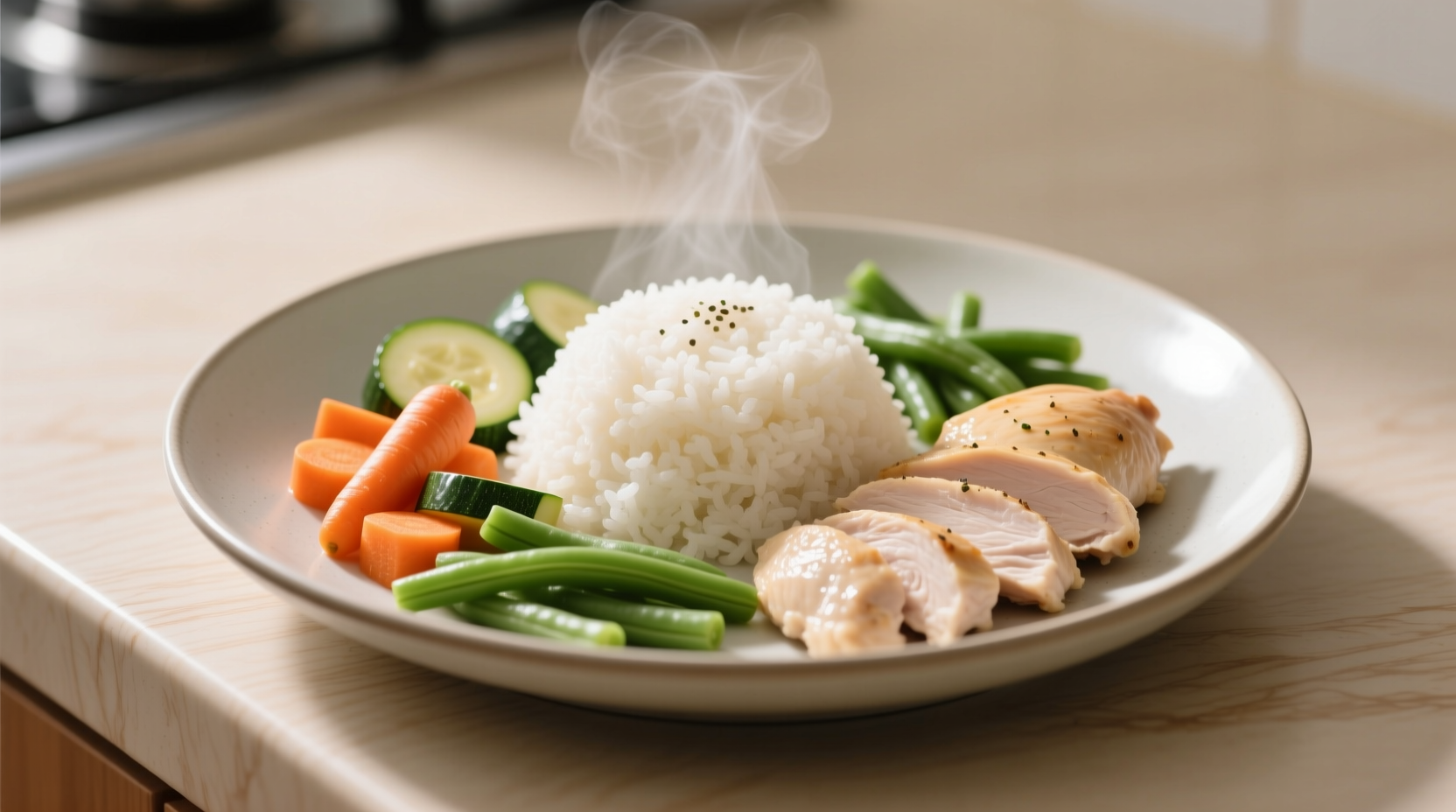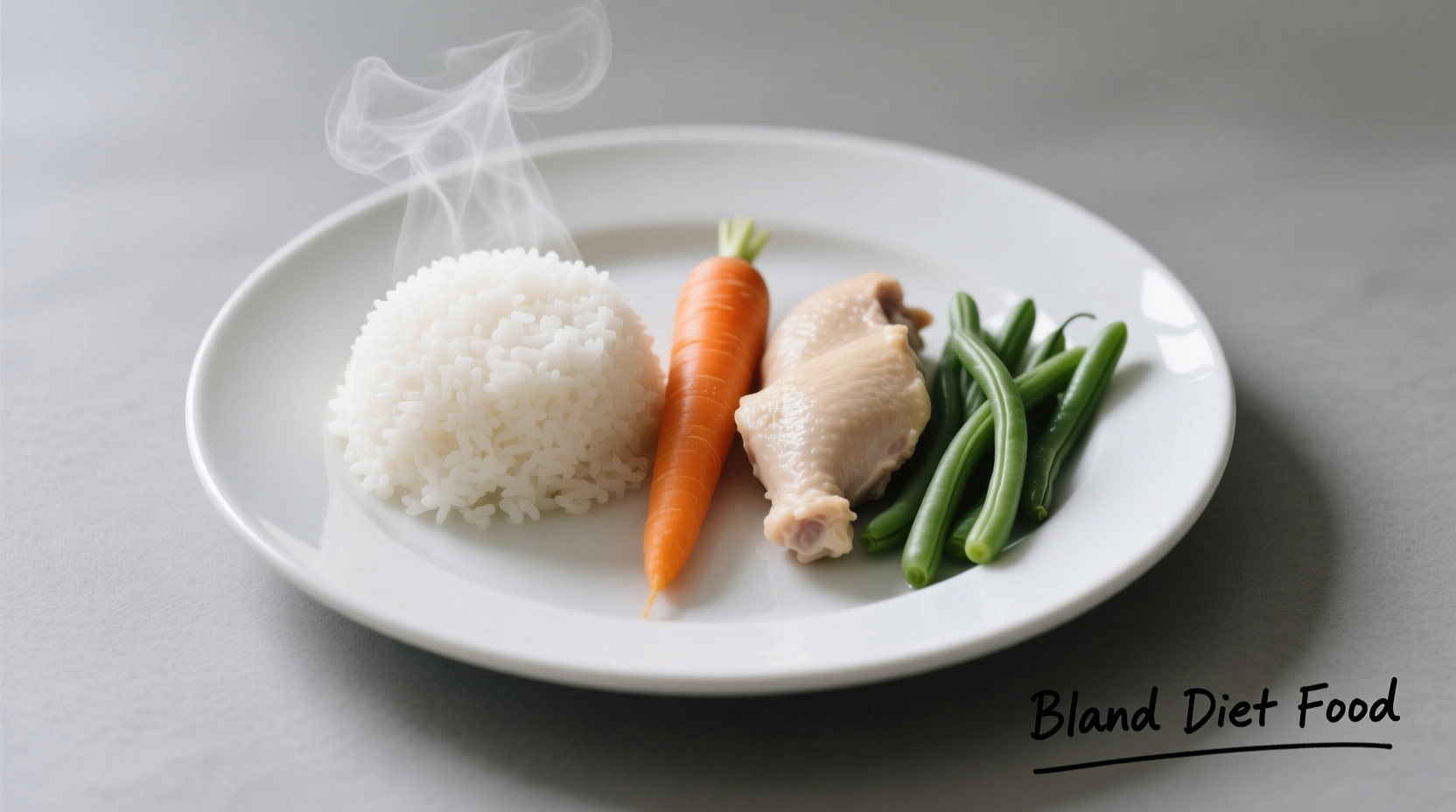If you're wondering what is bland diet food and whether it might help your digestive issues, you're not alone. Millions of people experience gastrointestinal discomfort each year, and a properly structured bland diet can provide significant relief while your system heals. This comprehensive guide explains exactly what constitutes bland diet food, when it's medically appropriate, and how to follow it effectively without compromising nutrition.
Understanding the Bland Diet: More Than Just Boring Food
Contrary to what the name suggests, a bland diet isn't about eating tasteless food—it's a carefully structured eating plan designed to minimize irritation to your digestive tract. Medical professionals prescribe this diet when your gastrointestinal system needs temporary rest from processing difficult-to-digest foods.
According to the National Institute of Diabetes and Digestive and Kidney Diseases (NIDDK), the digestive tract processes about 2,000 gallons of food, liquids, and digestive secretions annually. When inflammation or irritation occurs, reducing dietary stress allows healing to begin.
When Doctors Recommend a Bland Diet
Clinical guidelines from gastroenterology associations indicate that a bland diet serves specific medical purposes rather than being a long-term solution. The American Gastroenterological Association identifies several conditions where this dietary approach provides therapeutic benefit:
- Acute gastritis flare-ups
- Peptic ulcer disease during active healing phase
- Post-operative recovery after certain gastrointestinal procedures
- Diverticulitis in remission phase
- Managing symptoms of irritable bowel syndrome (IBS)
- Preparation for certain medical tests
It's crucial to understand that a bland diet is typically a short-term intervention. As noted in clinical nutrition research published by the National Institutes of Health, prolonged use beyond medical recommendation can lead to nutritional deficiencies.
Complete Guide to Bland Diet Food Choices
Understanding what foods are bland diet friendly requires knowing both what to include and what to avoid. The following evidence-based guidelines come from registered dietitians specializing in gastrointestinal nutrition.
| Foods to Include | Why They're Recommended | Portion Guidance |
|---|---|---|
| Cooked cereals (oatmeal, cream of wheat) | Low fiber, easily digestible carbohydrates | 1/2 cup cooked |
| White rice, pasta, noodles | Refined grains with minimal fiber | 1/2 cup cooked |
| Lean proteins (chicken, turkey, fish) | Soft texture, low fat content | 3-4 oz portions |
| Canned fruits without added sugar | Reduced fiber from cooking process | 1/2 cup servings |
| Cooked vegetables (carrots, green beans) | Softer texture, lower fiber than raw | 1/2 cup cooked |
Foods to Strictly Avoid on a Bland Diet
Equally important to understanding what is bland diet food is recognizing which foods can sabotage your healing process. The following items stimulate digestive secretions or cause physical irritation to sensitive tissues:
| Foods to Avoid | Why They're Problematic | Healthy Alternatives |
|---|---|---|
| Spicy foods (chili peppers, hot sauces) | Irritate stomach lining, increase acid production | Herbs like basil, parsley (small amounts) |
| Fried or greasy foods | Slow gastric emptying, increase reflux risk | Baked or steamed preparations |
| Raw vegetables and fruits with skins | High fiber causes mechanical irritation | Cooked, peeled versions |
| Caffeine and carbonated beverages | Stimulate acid production, cause bloating | Herbal teas, water |
| Alcohol and tobacco | Directly damage stomach lining | Complete avoidance recommended |
Sample Bland Diet Meal Plan
Many people searching for what bland diet food looks like in practice need concrete examples. Here's a medically reviewed one-day meal plan that provides balanced nutrition while remaining gentle on your system:
- Breakfast: 1/2 cup cooked oatmeal with 1/4 cup canned peaches, 6 oz low-fat milk
- Mid-morning: 1 small banana
- Lunch: 3 oz baked chicken breast, 1/2 cup mashed potatoes (no skin), 1/2 cup cooked carrots
- Afternoon: 1 cup low-fat yogurt
- Dinner: 3 oz baked salmon, 1/2 cup white rice, 1/2 cup green beans
- Evening: 1 cup warm chamomile tea

How Long Should You Follow a Bland Diet?
One of the most frequently asked questions about what is bland diet food concerns duration. Clinical evidence shows that the therapeutic window for this diet is limited:
- Acute conditions: 2-3 days for mild flare-ups
- Moderate conditions: 1-2 weeks for healing after procedures
- Chronic management: Up to 6 weeks for conditions like active ulcers
Research from the Mayo Clinic indicates that extending the bland diet beyond medical recommendation can lead to deficiencies in fiber, certain vitamins, and phytonutrients essential for long-term digestive health.
Transitioning Off the Bland Diet Safely
Many people make the mistake of abruptly returning to their regular diet after following a bland regimen. Medical professionals recommend a gradual reintroduction process:
- Week 1: Introduce one new food every 2-3 days
- Week 2: Gradually increase fiber content by 2-3 grams daily
- Week 3: Monitor for any return of symptoms before expanding variety
- Week 4: Return to balanced diet with modified portions of previously problematic foods
This phased approach, supported by the Academy of Nutrition and Dietetics, reduces the risk of symptom recurrence while allowing your digestive system to readjust.
Important Limitations to Consider
While researching what is bland diet food, it's essential to recognize this dietary approach isn't appropriate for everyone. Clinical guidelines specify several important limitations:
- Not recommended for individuals with diabetes without medical supervision
- Requires modification for those with food allergies or intolerances
- Should not be used as a weight loss strategy
- Not suitable for children without pediatric nutrition guidance
- Requires supplementation for extended use to prevent nutrient deficiencies
Registered dietitians emphasize that a bland diet serves as a temporary therapeutic tool, not a lifestyle choice. As noted in the Journal of Gastroenterology and Hepatology, "Dietary interventions must balance symptom management with nutritional adequacy, particularly during extended therapeutic periods."
Working With Healthcare Professionals
Before starting any dietary changes for medical reasons, consult with your healthcare provider. They can help determine if a bland diet is appropriate for your specific condition and provide personalized guidance. Many gastroenterologists now work alongside registered dietitians to create customized meal plans that address individual nutritional needs while managing digestive symptoms.











 浙公网安备
33010002000092号
浙公网安备
33010002000092号 浙B2-20120091-4
浙B2-20120091-4